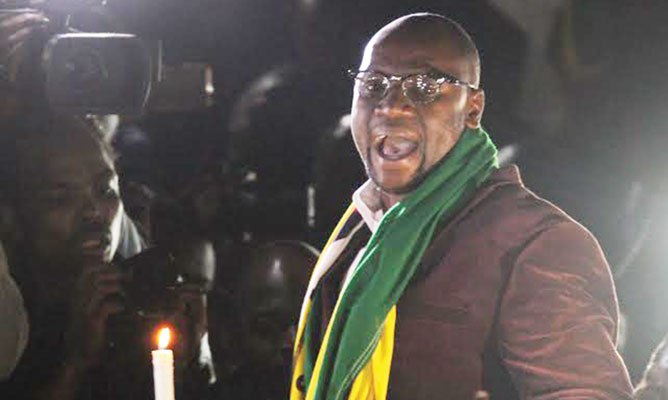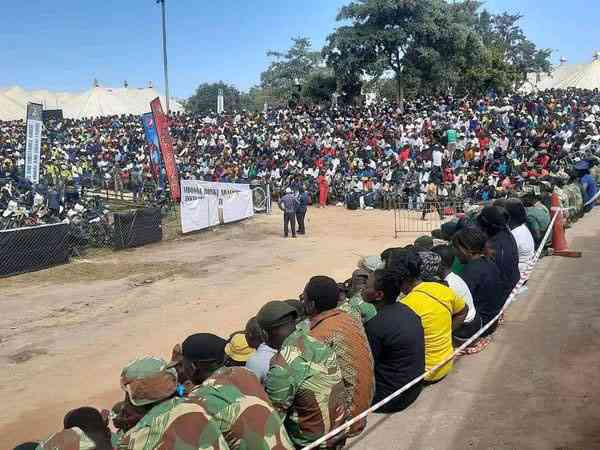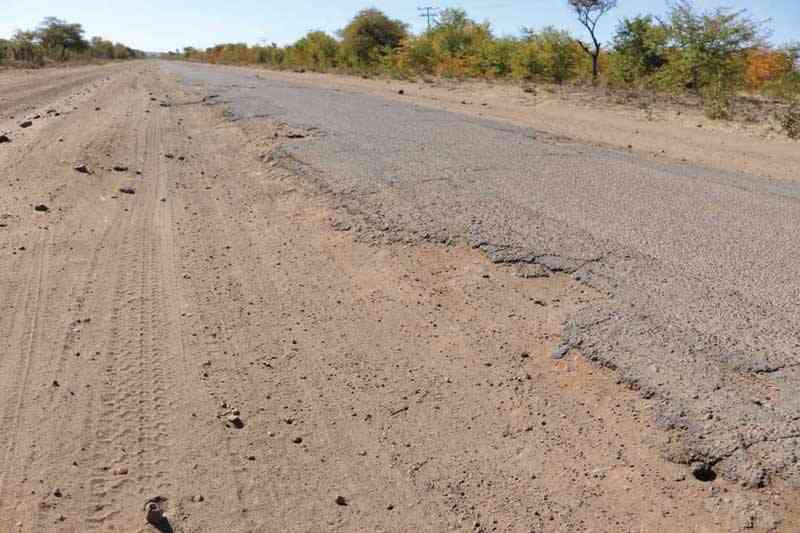
THE last few weeks have been a turning point for Zimbabwe with many protests erupting across the country as a sign of dissatisfaction with the actions of the Zimbabwean government over matters such as the banning of certain imports, unreasonable number of roadblocks, corruption and poverty. These protests led to a number of arrests, with the most notable of these being of Pastor Evan Mawarire and Promise Mkwananzi of #ThisFlag and #Tajamuka respectively.
Paul Kaseke
The response by the State to these protests remains deeply concerning in a constitutional democracy such as ours. From numerous engagements and interactions with different Zimbabweans, it would seem that this has created the misconception that protests are unlawful and this piece aims to clarify that position.
In order to understand the importance of the right to protest, a bit of background is necessary. Generally, the right to protest is a display of power by the citizenry in a domain they are usually excluded from. Ordinarily, government makes decisions on behalf of the electorate, but sometimes these decisions attract the scorn of the electorate and to voice disapproval, protests are used. Not only are protests used to express dissatisfaction, but they can be used to pressure government into changing its plans or policies. Protests are therefore a pressure vault that is turned on to influence change.
It is no hidden secret that part of the power of protests lies in the ability to destabilise the normal order of society and events in those societies. In essence, if a protest is to succeed it must in some way, cause the affected portion of society to stand still and reflect on the voices of the protest. At this stage I must make it clear that destabilisation is not the same as violence and should not be seen as such. Protests thrive on disruption. If there was no disruption, they would amount to nothing more than fashion statements and long walks with no effect. I have always taught it and referred to it as the power of inconvenience. If a protest inconveniences society, society is likely to pressurise government to act on the demands of the protesters. A good example of this is the 2015 #FeesMustFall protests that rocked South Africa. The power of the protests was not that everyone was protesting because that would be a lie. Some students who were not affected by the proposed fee hikes were disinterested in the protests, but varsities still came to a standstill warranting the intervention of the President himself. The power was in the fact that those who were protesting made it everyone else’s problem by inconveniencing them. To this end, cars were not allowed into campuses and libraries were blocked etc.
Nothing violent about that, but it was certainly a destabilising and inconveniencing factor. That’s how protests were designed to work and this is something shared by activist and author, Larry Kremer, who further notes that protests reflect the will of the people breathing life into the constitutional framework that was previously enjoyed exclusively by governments. In a sense, protests bring the citizenry to the same level of the government. Protests put the government on notice that the electorate is unhappy.
In the Zimbabwean context, our legal framework is centred on the Constitution coupled with 2 Acts. Section 59 of the Constitution guarantees the right to protest to each and every person in the Republic. This right is further qualified by stating that the right must be exercised peacefully and by unarmed protesters.
- Chamisa under fire over US$120K donation
- Mavhunga puts DeMbare into Chibuku quarterfinals
- Pension funds bet on Cabora Bassa oilfields
- Councils defy govt fire tender directive
Keep Reading
Mention must be made of bizarre and unconstitutional provisions that purport to deal with protests albeit inconsistently with the right to protest. The Criminal Law (Codification and Reform) Act contains two such provisions, namely sections 37 and 38. Section 37 creates an offence of disturbing the peace, security or order of the public or alternatively, invading the rights of others. We can dispense of the last offence rather quickly. The Act makes no mention of what it entails to “invade other people’s rights” but that clumsy formulation would be rendered unconstitutional in any event because potentially all human actions can be seen as invasive of other people’s rights but furthermore, protests as a vehicle of societal disruption, will always amount to the invasion of others’ rights. Disturbing the peace similarly will almost always happen with a protest whether it be through the singing of protesters, the noise made by their movements or their very presence. As I have mentioned before, the disruption need not be violent. It therefore runs contrary to the Constitution to further add layers of qualifications to a constitutional right which automatically renders those sections unconstitutional since the Constitution is supreme.
Another bizarre provision is the criminalisation of blocking roads or hindering traffic with a protest in s38. This offence carries a maximum sentence of 10 years. Any protest is likely to interfere with traffic flow and to criminalise this is to criminalise protests themselves.
The biggest affront to the right to protest comes from the poorly and fatuously drafted Public Order and Security Act (POSA). POSA itself seems to be a reincarnation of all the oppressive laws used by both the apartheid South Africa and Rhodesian regimes. The Act criminalises public meetings that are not sanctioned. This offence was ironically used by oppressive regimes to prevent uprisings and mobilisation of masses and not surprisingly, remains a large way of preventing dissent 36 years after the end of Rhodesian minority rule. This clause violates not only the right to protest, but the right to freely assemble in section 58. To have a clause like this in a constitutional democracy is nothing short of shameful and disgraceful.
Section 23(8) then creates a defence to this prohibition by requiring groups that meet to provide, at the request of the police or regulatory authority, the names of people attending the meetings from time to time.
Section 25 stipulates different time frames by which notice must be given before a demonstration, protest or public meeting can take place. 7 days are required before a protest and 5 days before a public meeting, but the 5 days can be reduced to 3 during election time.
Failure to provide such notice attracts a 1-year jail sentence and or a fine.
Section 26(9) allows the police as the regulating authority, to prohibit a protest on the grounds that it is likely to cause the disruption of traffic and public disorder amongst other things. Clearly, the drafter(s) of this Act did not have the slightest understanding of a constitutional democracy and basic human freedoms. This absurd provision basically makes it impossible to have a protest in Zimbabwe. As stated above, protests will almost always disrupt traffic, but that is no reason to limit the right. These additional grounds for limiting a protest are unconstitutional, hence they have been overturned and ignored in judgments that allowed protests to take place after police had refused to grant permission.
The very idea of permission or approval being sought or granted by the police is another weird concept found in the Act. That certainly does not appear in the Constitution and indeed the only role police should play is to receive the notice of intention to march simply so they can provide the necessary security arrangements. The courts should be the only decision makers when it comes to prohibition of protests and not a partisan police force that still battles with basic constitutional interpretation. There are, of course, those who argue that such approval is necessary to prevent violent protests, but the reality is that protests only become violent because the State, through the riot police, assault protesters and throw teargas indiscriminately to disperse protests where no such need arises. To prevent violent protests, the riot police should undergo training on how to manage crowds in line with the Constitution and respect for human life. It is unacceptable that in this day and age, crowds are dispersed using dogs and baton sticks (sometimes spelt button sticks on charge sheets). Their policing strategies need to be revised to reflect a force that respects the citizenry it swore to protect and serve and not the interests of the government.
Section 27(1) creates another weird power in terms of which blanket bans on protests can be made for up to one month at a time if any of the trigger grounds mentioned above are present. This constitutes the most obscene violation of the right to protest and assemble with no constitutional basis to support it.
Lastly, Section 37 allows for the deployment of the Defence Forces to assist police to “suppress civil commotion or disturbance”. It is a well-established principle of civilian governance that the Defence Forces must rarely be used to intervene in domestic law and order matters unless these pose a national security risk. To prevent deployment from being abused, most jurisdictions allow deployment to take place only under the instruction by the President himself and with the consent of Parliament. South Africa is a good example of this constraint on the deployment powers, but in terms of POSA, the Commissioner-General of Police need only make a recommendation to the Minister who will then make the decision with zero parliamentary oversight. It, thus, means it is very easy for the government to make good VP Mphoko’s threats to unleash the army on protesters.
In the absence of a direct constitutional challenge to these provisions, I suspect the government will not be in any hurry to align these laws to the Constitution since the current statutory framework enables them to crush dissent “lawfully”, but certainly protests are a necessary ingredient to any vibrant democracy.
Paul Kaseke is a legal adviser, commentator, analyst and sessional law lecturer with the Wits Law School. He writes in his personal capacity. You can give him feedback via email: [email protected] or follow him on twitter @paulkasekesnr












